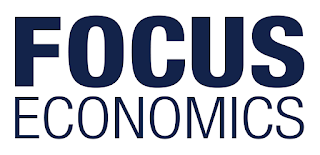The economy is set to have suffered a severe blow in Q1 due to the coronavirus pandemic and associated containment measures, with the full brunt of the impact to be felt in Q2. The vital tourism sector, in particular, is already showing signs of extreme duress: In March, tourism revenues plunged by over 70% year-on-year, the sharpest fall ever, as air travel was suspended and businesses closed up shop. Meanwhile, the manufacturing PMI collapsed at an unprecedented rate in April, with output, new orders and employment declining the most since 1999 as the pandemic swept through the continent, shattering demand. As part of efforts to revive the tourism industry, some hospitality businesses started to reopen on 25 May, with hotels following suit on 1 June and direct flights resuming on 15 June. The government also announced a series of VAT cuts to stimulate consumption.
The economy is expected to fall into recession this year as the pandemic and lockdown measures take their toll, particularly as the economy’s high dependence on the tourism sector and large share of micro businesses make it more vulnerable to the Covid-19 shock. The country’s enormous pile of public debt and sour loans burdening the banking system cloud the outlook. FocusEconomics panelists see GDP contracting 8.4% in 2020, which is down 0.9 percentage points from last month’s forecast, and growing 5.7% in 2021.
Harmonized consumer prices fell 0.9% on an annual basis in April, the largest drop in nearly five years, after rising 0.2% in March. Price pressures are poised to remain muted ahead, capped by depressed activity. Our panel sees harmonized consumer prices falling, on average, 0.3% in 2020. In 2021, they see harmonized inflation at 0.7%.
Industrial output increased 0.6% year-on-year in working-day adjusted terms in March (February: -3.2% year-on-year), breaking a streak of five consecutive months of contraction. The upturn was primarily driven by a rebound in manufacturing production. Meanwhile, electricity supply output fell for the eleventh successive month in March. On a working-day adjusted monthly basis, industrial production rose 5.8% in March (February: +1.4% month-on-month). Meanwhile, the trend improved slightly, with the annual average variation in industrial production coming in at minus 1.4% in March, up from February’s minus 1.5%. FocusEconomics Consensus Forecast panelists see industrial production falling 8.5% in 2020, which is up 0.4 percentage points from last month’s forecast. In 2021, the panel sees industrial production growing 4.8%.
PMI Plummets
The IHS Markit manufacturing Purchasing Managers’ Index (PMI) plummeted from 42.5 in March to 29.5 in April, marking the lowest reading since data collection began in May 1999. Thus, the PMI fell deeper below the critical 50-threshold, indicating a deterioration in operating conditions in the manufacturing sector. April’s plunge mainly reflected stark contractions in production and new orders, with both falling at a record pace, as the spread of the Covid-19 pandemic led to a collapse in domestic and foreign demand as well as a sharp pullback in production capacity. Moreover, the resulting spare capacity and closure of factories led manufacturers to cut their workforce numbers at the sharpest rate in series history. On the price front, input costs declined markedly and goods producers slashed selling prices drastically in a bid to attract clients. Meanwhile, the bleak outlook for production and fears over a slow recovery led business confidence to decline to its lowest level since mid-2015. FocusEconomics Consensus Forecast panelists see fixed investment plummeting 11.9% in 2020, down 1.3 percentage points from previous month’s estimate. In 2021, the panel projects fixed investment to expand 7.5%.
Unemployment
The number of unemployed workers fell by 13,527 in February compared to January while the seasonally-adjusted unemployment rate inched down to 16.1% from the previous month’s revised 16.2% (previously reported: 16.4%), according to data released by the Hellenic Statistical Authority (ELSTAT). February’s reading was the lowest since March 2011 and below that of the same month in 2019 (February 2019: 18.4%). Greece’s unemployment rate has fallen steadily in recent years, since peaking at around 28% in the summer of 2013. However, it remains the highest in the Eurozone by far and is set to rise in the coming months as the Covid-19 crisis takes its toll. Meanwhile, youth unemployment—categorized by individuals between the ages of 15-24—came in at 35.6% in February, below February’s 2019’s 36.5%.



